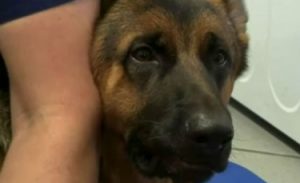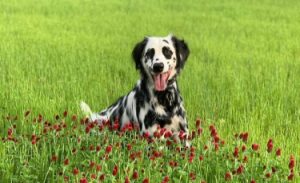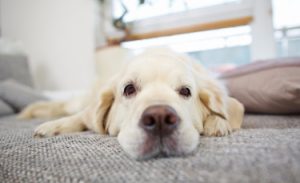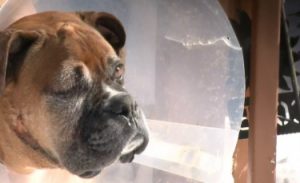Other names: Congo Terrier, Nyam-Nyam Terrier
A breed that is little known in France in the end, the Basenji is an adorable dog suitable for any type of family. It blends in wonderfully in any type of environment. It does not require any maintenance because it is renowned for its cleanliness. He is sociable, gentle, but also lively and athletic. He is protective and caring. The perfect dog.
<!–
–>

| Short | |
| Congo | |
| Small | |
| Long |
| Sex | Weight | Cut |
|---|---|---|
| Female | From 9 kg to 10 kg | From 40 cm to 41 cm |
| Male | From 10 kg to 11 kg | From 42 cm to 43 cm |
History of the breed
The Basenji is considered to be an aristocratic dog in his appearance. He is originally from the Congo and happens to be a very old breed. Indeed, he descends from the greyhound of Egypt. We find its trace more than 5,000 years ago.
The first Basenji to be imported into Europe from the early 20th century, in the mid 1930. It arrived in France in 1966 but is still very little known on the French territory. Conversely, it is very popular with families in England and the Nordic countries, in particular thanks to its great friendliness. The Fédération Cynologique Internationale recognized the breed on March 26, 1964.
Basenji Pictures


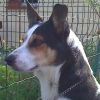
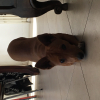
See all photos of Basenji from Woopets members
Physical features
His hair: short, shiny, tight, of fine texture and covering a very supple skin.
Its color: two-tone in most cases (pure black and white, red and white, black and tan, fawn and white, white with dots and tan markings on the eyes, muzzle and cheeks), unicolour black or brindle (stripes black on a red background). The feet, the chest and the tip of the chest are white.
His head: finely and profusely wrinkled, especially on the forehead when the dog pricks up its ears. The skull is flat, well chiseled, moderately broad, tapering towards the nose.
His ears: small, not very thick, pointed, well erect, set high and forward.
His eyes: dark in color, almond shaped, displaying a somewhat mysterious expression.
His body: well proportioned, harmonious. The back is short and horizontal, the chest is well lowered in the sternal region, the belly rises and merges with the flank which is well marked.
Its tail: set high, coiled in a tight loop above the spine.
Behavior and character
| Affectionate | |
|---|---|
| Calm | |
| Protective | |
| Independent | |
| Hunter | |
| Barks / howls |
Behavior with others
| Cohabitation with children | |
|---|---|
| Sociable with other animals | |
| Love strangers |
the Basenji is a balanced, lively and intelligent dog. He is quite independent and is suspicious of strangers , but he remains affectionate towards his master and his family. The Basenji does not bark, it is not for all that silent, since it emits a characteristic cry which evokes the chuckles or the vocalizations of the Tyrolean singers. It is not a dog particularly known to like children. It is better that the children grow up at the same time as him. This is to avoid misinterpretation of an inappropriate gesture by a child unfamiliar with dogs.
The Basenji
is it right for you? Take the test!
Education
| Clever | |
|---|---|
| Obedient |
The first order to teach him is to recall . Otherwise, he will be inclined to favor his flair rather than listen to his master. The Basenji is a remarkable dog who is not very difficult to train. He needs a strict education , firm , but also filled with gentleness , otherwise he could focus and withdraw into himself. As with all dogs, it is enough to start very early.
Living conditions
| Suitable for apartment living | |
|---|---|
| Good for new masters | |
| Love it hot | |
| Love the cold |
The advantage of the Basenji is its absence of barking, to which it prefers a small chuckle. He is therefore not silent, but will not disturb the neighborhood if he lives in an apartment and therefore in the city. He is also not against city life, provided he benefits from several daily outings. Indeed, it is not made to remain exclusively inside a habitat. Thus, it will be more comfortable in the countryside or in a house with a garden . A garden that he will have to avoid in winter and when the temperatures cooler.
Health
| Solid | |
|---|---|
| Ease of gaining weight |
The Basenji has a solid health , to which some diseases can nevertheless cling. So, during his lifetime, he is predisposed to develop Fanconi syndrome , which is a fatal genetic kidney disease. It will be necessary that his master, before any adoption, has had a test done by the breeder. In addition, because of his size, he is also more fragile at the hip, where he can be prone to dysplasia . An inguinal hernia is also not excluded. Finally, if he likes hot weather, he only moderately appreciates the winter cold. It will therefore need to be covered in the colder months.
Hypoallergenic breed
No
Litter size
Between 4 and 6 puppies
| Major concerns |
|
||||||
| Minor concerns |
|
| Occasional concerns |
|
||
| Suggested tests |
|
To protect yourself from these risks and insure your companion in the event of health problems, Woopets recommends a Basenji dog insurance .

function showAssuranceForm () {var siteReferer = var id_race_association = ’16’; //console.log(id_race_association);success: function (html) {}});}document.addEventListener (‘DOMContentLoaded’, () => {$ (‘# assuranceModalBanner’). on (‘show.bs.modal’, function (event) {showAssuranceForm ();});});
Life expectancy
Minimum: 12 years old
Maximum: 14 years
The life expectancy of a Basenji is, on average, between 12 years and 14 years.
Calculate the human age of your Basenji!
To choose… 1 year 2 years 3 years Four years 5 years 6 years 7 years 8 years 9 years 10 years 11 years old 12 years 13 years 14 years old 15 years old 16 years old 17 years 18 years old 19 years old 20 years 21 years old
Maintenance and hygiene
| Ease of maintenance | |
|---|---|
| Cost of maintenance | |
| Hair loss |
| Drool level | |
|---|---|
| Ease of grooming |
the Basenji is a dog which requires very little maintenance and which sheds very little hair . It is known and appreciated for its remarkable cleanliness. He has this manner of ensuring his own toilet which is somewhat reminiscent of that of cats, of which he sometimes imitates the sitting posture. This does not mean that it should not be maintained at all, which would put it at risk of infection and disease.
Despite its extreme cleanliness , it is recommended to brush the dog on a weekly basis to help it maintain the cleanliness of its coat. As the Basenji are very clean dogs, they rarely need a bath.
His eyes and ears should be checked regularly to make sure there is no trace of dirt or any infection. His teeth need to be brushed to eliminate the build-up of tartar and the proliferation of bacteria. Finally, if they do not wear out naturally, his nails need to be cut. If you are new to this, it is recommended that you seek advice from a veterinarian.
Price and budget
Purchase price
Mini
Max € 500
1000 €
The purchase price of a Basenji is between € 500 and € 1000.
Annual maintenance cost
Mini
€ 950 Maxi
1050 €
The annual maintenance cost of a Basenji is between 950 € and 1050 €.
Name ideas for a Basenji
| Male |
|
| Female |
|
None of these proposals suit you? Use our tool to find the name of your Basenji!
Food
Basenji are prone to overweight . In fact, a balanced diet in relation to its daily energy expenditure is essential. His diet should be adapted to his physical activity, age, weight and height. It is made from high quality croquettes , to be divided into 2 meals per day. Do not hesitate to approach a veterinarian to rationalize it.
Want the best for your dog?
Create the tailor-made power supply for your Basenji
I discover !
PROMO -30% | Delivered to you!

Physical activity
| Athletic | |
|---|---|
| Energy level | |
| Potential to play |
the Basenji is a dog who needs a lot of exercise to burn off his energy . They are inherently free and active dogs that require daily activities and walks. He also enjoys playing sessions and is quite comfortable t on agility courses.
Competitions
| Classifications & Standards |
|
Others
| Master character <span class="btnTooltip qTip2" title="- Calm: the master must be gentle and know how to show patience. – Active: the owner must be energetic and dynamic to live in harmony with his dog. – Hyperactive: the owner must be stimulating and very restless to suit the temperament of his dog.”> |
Active |
|---|
FCI Information
FCI No.
43
FCI Group
Group 5: Spitz-type and primitive-type dogs
Recognized by FCI
Since 1964
</div



